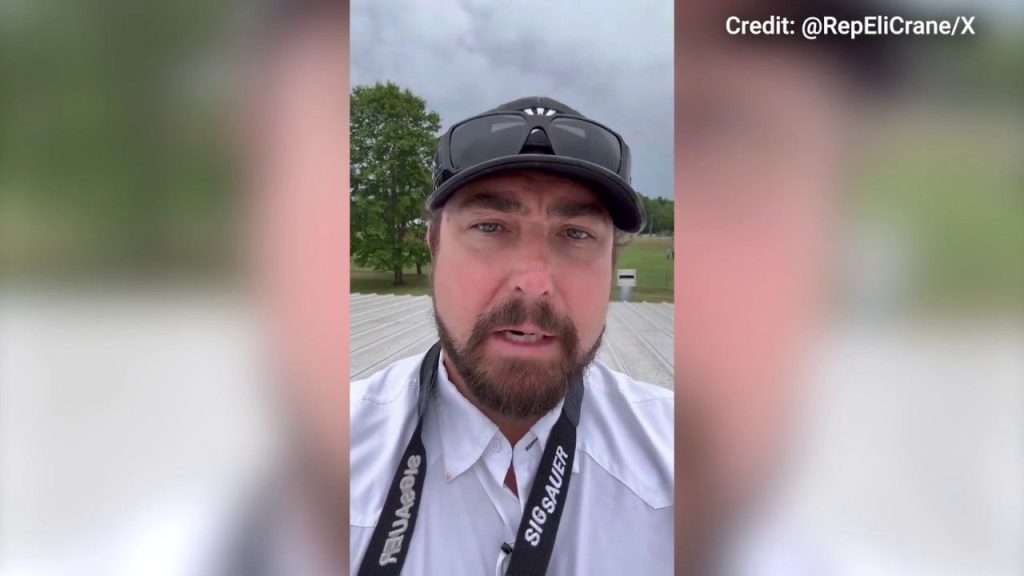Republican Rep. Eli Crane of Arizona, along with a bipartisan group of lawmakers, visited Butler, Pennsylvania, and raised questions about the attempted assassination of former President Trump. Crane, a former Navy SEAL sniper, filmed himself on the rooftop from which the shooter, Thomas Crooks, fired at Trump during a rally. Despite Secret Service Director Kimberly Cheatle claiming that a “sloped roof” prevented her agency from placing personnel on the building during the rally, Crane debunked this claim by noting that the rooftop was easily accessible, and even a 70-year-old congressman was able to climb up while they toured the location.
Crooks, a 20-year-old who climbed onto the rooftop about 150 yards away from where Trump was speaking, took several shots at the former president before being killed by Secret Service countersnipers. The Secret Service has come under heavy scrutiny for the security failure that allowed Crooks to position himself on the roof with a direct line of sight to Trump. Crane, drawing on his experience as a former Navy SEAL sniper, identified the missed opportunity for the Secret Service to place countersnipers on a nearby water tower and pointed out other security miscues in the area. He emphasized that if there had been sniper teams in place, Crooks would not have been able to even get onto the roof.
During the visit to Butler, Crane also pointed out where Trump’s stage was set up for his speech and raised concerns about why the Secret Service agents stationed in adjacent buildings were not able to quickly dispatch the shooter. Crane expressed his determination to conduct oversight and get to the bottom of the security lapses to ensure that such an incident never happens again. This follows Sen. Ron Johnson’s release of preliminary findings from his office’s investigation into the assassination attempt, which revealed that the Secret Service did not attend a security briefing given to local SWAT and sniper teams on the morning of July 13, among other communications and planning failures.
The preliminary findings also highlighted that local law enforcement had notified command about Crooks before the shooting and received confirmation that the Secret Service was aware of the notification. Additionally, photos of the shooter were sent to the ATF for facial recognition, and it was initially reported that the Secret Service was not planning on sending snipers to the rally. The investigation raised questions about the coordination and communication between local law enforcement and the Secret Service, as well as the security preparations and response during the rally. The scrutiny of the security failure that allowed the shooter to target Trump has prompted calls for reform and improvement in security protocols to prevent similar incidents in the future.
Overall, Rep. Eli Crane’s visit to Butler, Pennsylvania, shed light on the security lapses that allowed Thomas Crooks to attempt the assassination of former President Trump during a rally. Crane’s experience as a former Navy SEAL sniper provided valuable insights into the missed opportunities and failures in security arrangements that ultimately led to the shooting incident. The investigations and preliminary findings released by Sen. Ron Johnson have further highlighted the gaps in communication, coordination, and planning between local law enforcement and the Secret Service, prompting calls for reform and improved security protocols to prevent similar security breaches in the future. The bipartisan efforts to address the security failures and ensure the safety of public officials and events underscore the importance of robust security measures and oversight in safeguarding against potential threats and attacks.


